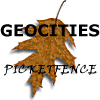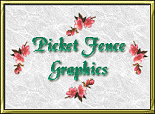



Plan Before You Plant
Only God can make a plant grow, but we can be sure that it is located in place that suits that plant's specific needs. A plant will never flourish if it is planted in an unsuitable location.The key to a good landscape is to put the right plant in the right place. the right plant is one that will be the mature size and shape that you want. The right place is where it will have ample room to reach maturity, the proper amount of sunlight, and moisture, the right temperatures, type of soil, and nutrients. All of these things must be considered if a plant is to do well in its new home.
You need to know the specific needs of a plant to know if it is right for your landscape. Find out this informaion before you choose a plant, it may look great in a container at the nursery, but be entirely wrong for your situation. It is much easier to select a plant that will like the location, than to try to alter the location to suit the plant. A shade lovig plant will never do well in full sun. A moisture loving plant won't work in a desert.
When you buy a plant it is usually only a small fraction of the size it will become. A plant must be planted with its MATURE size in mind. If you have a 3 foot wide space, do not put a plant there that gets 6 feet wide, even though it will fit there when it is young and smaller.
Don't think you can keep it smaller by pruning. The more you prune, the harder the plant will try to reach the size it is meant to be. It will cause lot of work for you, with poor results. If you have to trim plant to control its size within the first year after planting, You're in trouble! You've made a really bad choice.
When planting near a fence or wall be sure to put the plant at least a little over 1/2 the mature width away from it. A plant that matures at 5 feet wide should be at least 3 feet from the wall.
When spacing plants, they should be planted as far apart as their mature width, or farther, if you want some space between them when they mature.
Such simple concepts, I don't understand why they are so often ignored.
Finding the right plant for the right place is the hard part. If that is done, you are practically guaranteed a beautiful, and very low maintenance landscape.
It looks really tacky to see plants panted so close that they grow into each other, and you can't tell where one stops and the other starts. It is even worse when they are sheared together into one solid shape. This happens when the mature size is not considered when spacng the plants. Many people seem to forget that plants not only grow taller, but wider too.
It is possible to buy mature plants, but they are quite expensive, especially for larger plants. They are much harder to locate, and more difficult to transplant successfully.
If you find that a plant you like will get larger than you need, ask about dwarf varieties of the same type plant. Many plants have numerous varieties, that mature at different sizes. And more are being introduced regularly. If no one at your nursery can help you with this information, find another nursery.
Before you purchase a plant, be sure you know:
1. The mature height & width
2.Is it hardy in your zone? (What is your zone?)
3.How much sunlight does it like?
4.What type of soil & drainage does it need?
Read the Tag! Even your discount department store garden center usually has tags which at least tell you the mature height & width. Be sure the location you have in mind is suitable for the needs of the plant!

 Links to help you find the
right plant
Links to help you find the
right plant
 The Virtual Garden- Look up a
plant by name or attribute; Find your hardiness zone; and
much more. A must see site!
The Virtual Garden- Look up a
plant by name or attribute; Find your hardiness zone; and
much more. A must see site!
 Growit.com-
A great source of plant information. Includes a landscape
plant selector where you enter selected criteria, and get a
list of suitable plants, and information about them.
Growit.com-
A great source of plant information. Includes a landscape
plant selector where you enter selected criteria, and get a
list of suitable plants, and information about them.
 The Garden Web- Has
many different garden and landscape related forums where
you can ask, or answer, questions, a garden glossary and
more. One of my favorite sites!
The Garden Web- Has
many different garden and landscape related forums where
you can ask, or answer, questions, a garden glossary and
more. One of my favorite sites!
 Horticopia-
If you know the scientific names, this is the largest
datebase I've found of Landscape plant photos and info. If
you don't know the scientific name,The Garden Webnow has a plant database that can tell you many of them.
Horticopia-
If you know the scientific names, this is the largest
datebase I've found of Landscape plant photos and info. If
you don't know the scientific name,The Garden Webnow has a plant database that can tell you many of them.
 The Garden
Gate- Full of links to tons of gardening
information.
The Garden
Gate- Full of links to tons of gardening
information.
<--LINK5-->
 The Right Tree
Handbook- A guide to planting the right tree in the
right place. Includes photos and mature size information
for many
common trees. Emphasizes avoiding power lines.
The Right Tree
Handbook- A guide to planting the right tree in the
right place. Includes photos and mature size information
for many
common trees. Emphasizes avoiding power lines.
 Plantamerica
A plant search engine. Search by common or latin name.
Plantamerica
A plant search engine. Search by common or latin name.
 Design Disasters
Design Disasters

If you do your homework before you select your plants, and put the right plant in the right place, most of the work is done. As long as your plants are happy in their new home you are almost guaranteed to have a beautiful, and very low maintenance landscape. If the right plants are selected,and given room to grow, Very little pruning will ever be needed. All else you need to do is to watch out for damage from pests. (Man included)
If you live in the southeast, a book I find indispensable when selecting plants is, "Landscape Plants of the Southeast" by R. Gordon Halfacre and Anne R. Shawcroft.
© 1998 Flowerladi@webtv.net

